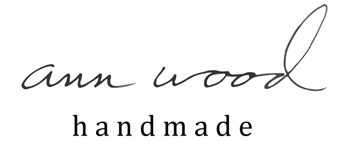
Welcome to the owl sew-along! This week is focused on creating the body shape – that’s the first section in your pdf or booklet. We’ll also talk a little bit about installing button eyes.
All you need to participate is the owl sewing pattern.
Take your time and focus on one step at a time. You are going to make a fantastic owl. And join a community for extra support – it helps a lot, especially if you are a beginner. Find the facebook community here and the ann wood handmade community here.
For more info on how this sew-along works please click here.
choosing fabric
For the body shape choose a fabric that’s easy to work with. I’m using cotton. For feathers and features a variety is nice. And like the crow, stripes are great for feathers. We’ll talk more about that when we get the the feather section.
Let’s start with looking at how the pattern pieces magically come together to make the body shape. Please watch the video above. If you don’t see the video click here.
making the owl body

Follow the steps and your pattern and a few key points are highlighted below. Cut out your 6 body pieces and mark the seam line on all the pieces. Also mark the opening for the back and the dot mark on the front body piece. That dot is important. Sew the first seam, joining the back body pieces. Pin them with right sides together and sew – leaving the opening for turning and stuffing.

Mark the darts on the owl front pieces. Fold the leg over – so the right sides of the fabric are together. The fold should be exactly where the dot is and end where the leg meets the body. Place the dart template on the fold between the leg seam lines.

Sew the dart curves with small tight stitches. I prefer to hand sew the darts. I’m going to machine sew the rest of the body seams.

Add the front and back head pieces and your front and back bodies are complete and ready to join. The secret to success is lots of pins and careful edge matching. Start pinning form the leg and work your way up.

It’s helpful to re-mark the seam line where the dart fold over. You’re going to stitch right through that fold. With the long seam stitched keep working on the same side of the body to stitch the back of the leg and the tail. Repeat for the other side of the body.

Stuff your owl with wool stuffing. Begin at the head adding a little at a time. I used about 3.5 ounces of wool. The owl should be very firmly stuffed. Check out this post about stuffing for some tips. I put a little stuffing in the legs but we’ll mostly deal with those when we install the legs so save some stuffing for that.
owl eyes
Let’s get a head start on the features and feathers section by installing our eye buttons. The pattern has instructions for shank and flat buttons. I chose shank buttons so I’m making a little hole to sink the shank into.
The key here is to make the hole without breaking the threads of the fabric. Start making the hole with a big needle. Next use something pointy but larger like a bamboo skewer or a pencil. You’ll need a sturdy thread to sew in the eyes – dental floss works too!.



































































































